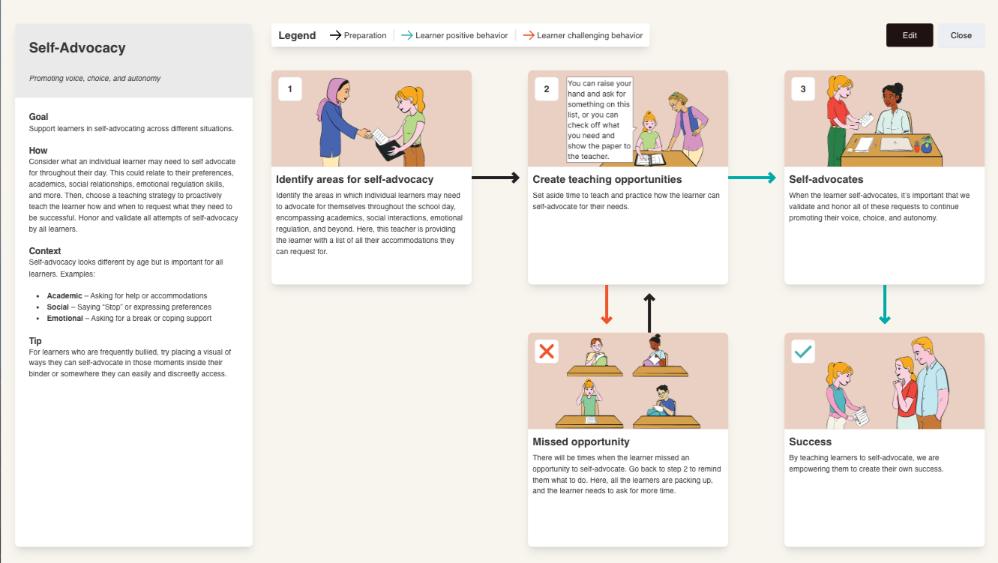
Self-Advocacy
Teaching Voice, Choice, and Autonomy Across School, Home, and Community
Self-Advocacy equips autistic and other neurodivergent learners to request help, set boundaries, and express preferences in real time. By embedding visuals, scripts, and role-play into Behavior Intervention Plans (BIPs) and IEPs, BCBAs, special-education teachers, and parents foster confident communication that reduces frustration and supports meaningful inclusion.
Why use self-advocacy strategies?
- Fewer behavior escalations and higher emotional well-being. Studies link explicit self-advocacy instruction to significant drops in avoidance, aggression, and anxiety during challenging tasks.
- Stronger peer relationships and safety. Teaching clear ways to say “Stop” or “I need space” increases peer respect and decreases bullying incidents.
- Improved academic outcomes and independence. Learners who can request accommodations and breaks show higher on-task time and greater persistence with difficult coursework.
What you’ll unlock inside BIP Visualized:
- A step-by-step overview of how to use this evidence-based strategy
- Ability to customize images and descriptions to individualize for your learner
- Aligning, printable visual resources to support teaching and generalization
- Ability to add this visual strategy and more to build a custom-made visual BIP tailored to your learner’s needs
Start your free trial to access the Self-Advocacy strategy and build a personalized, team-friendly visual Behavior Intervention Plan today.
Access Resource
